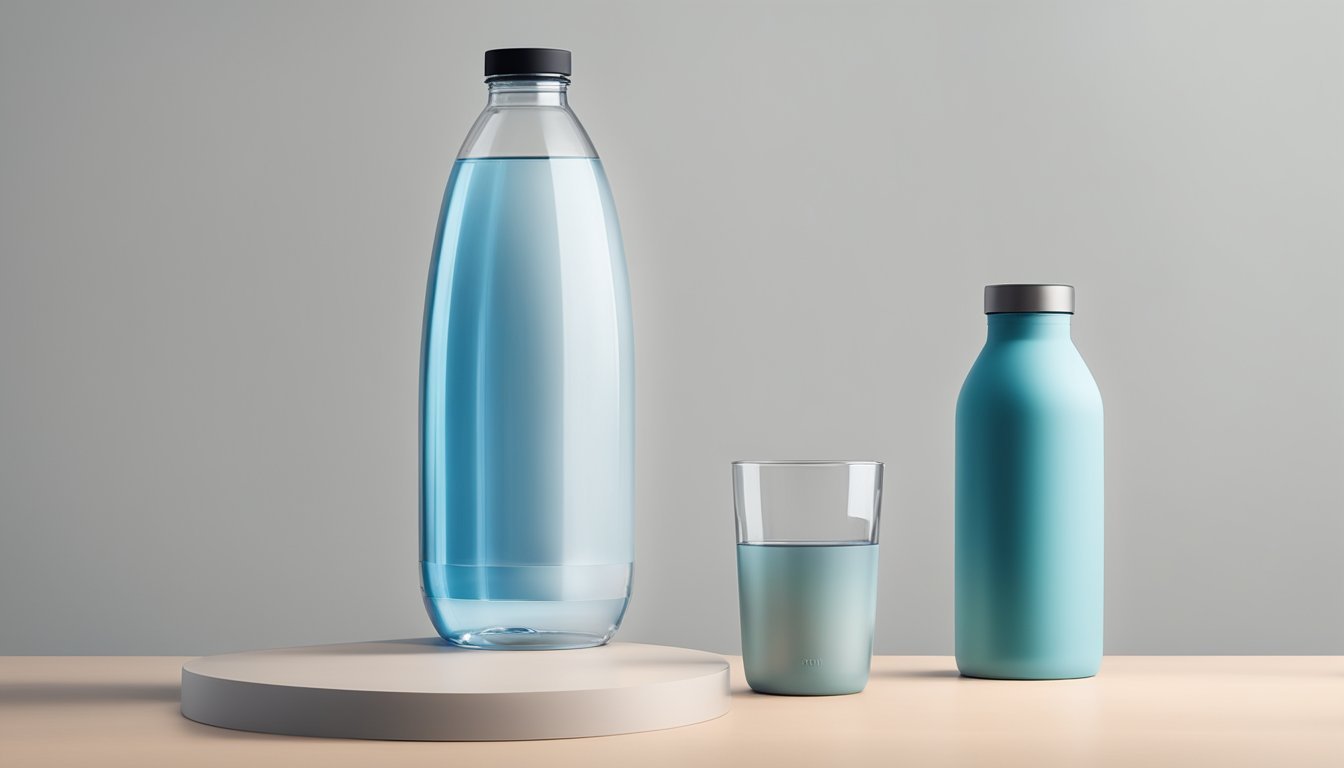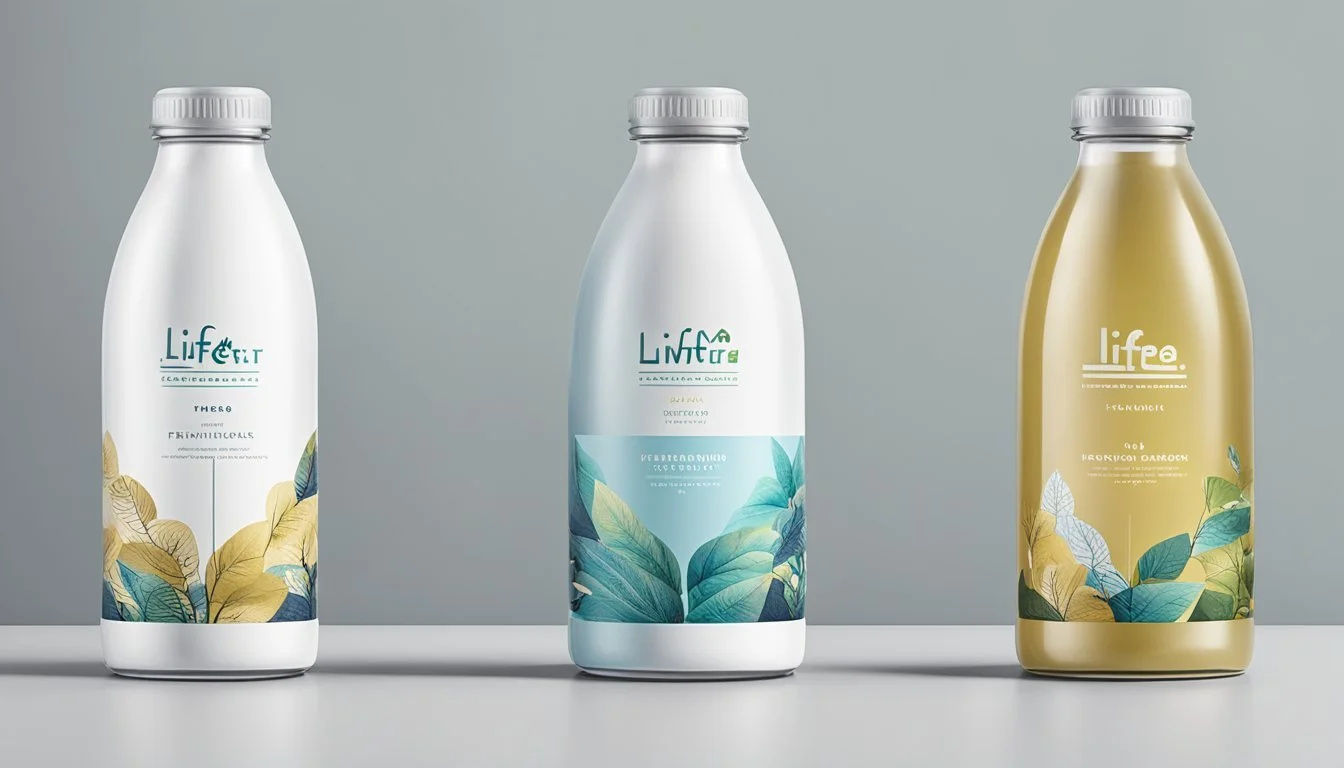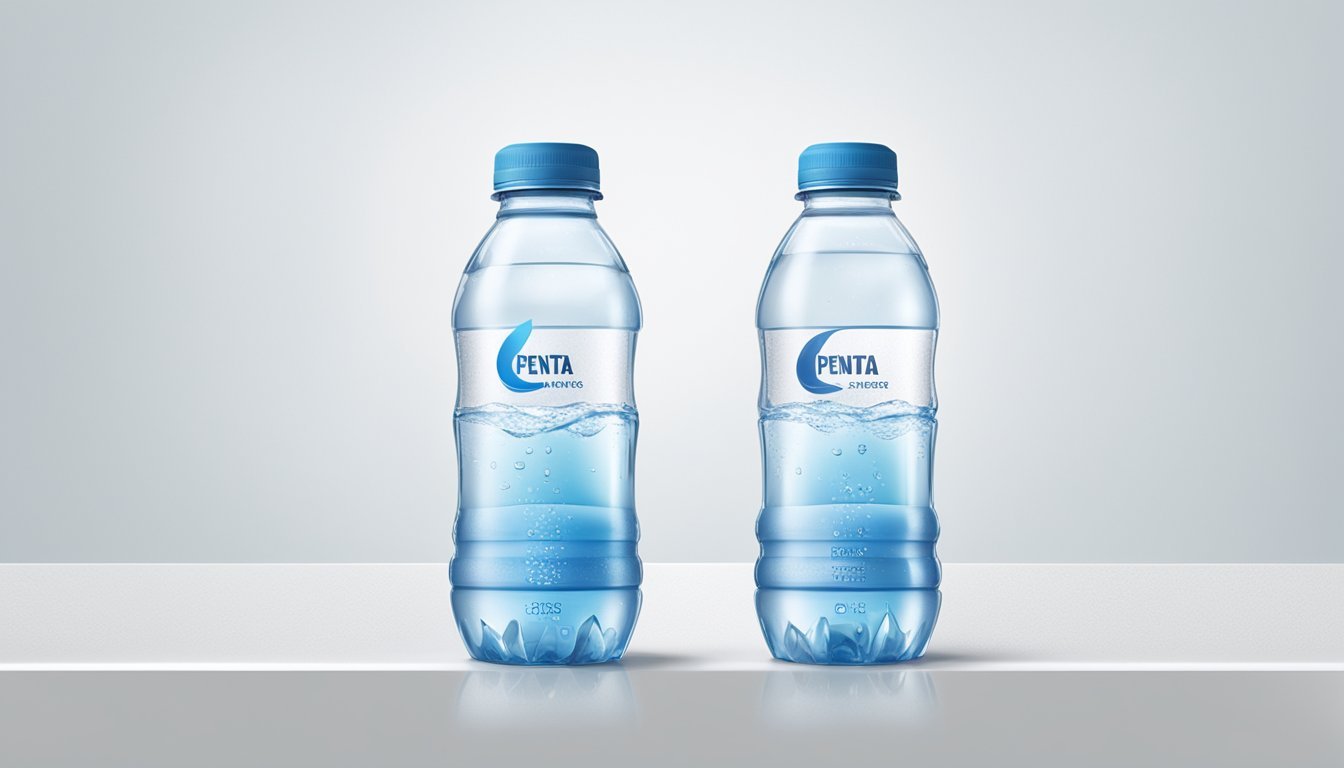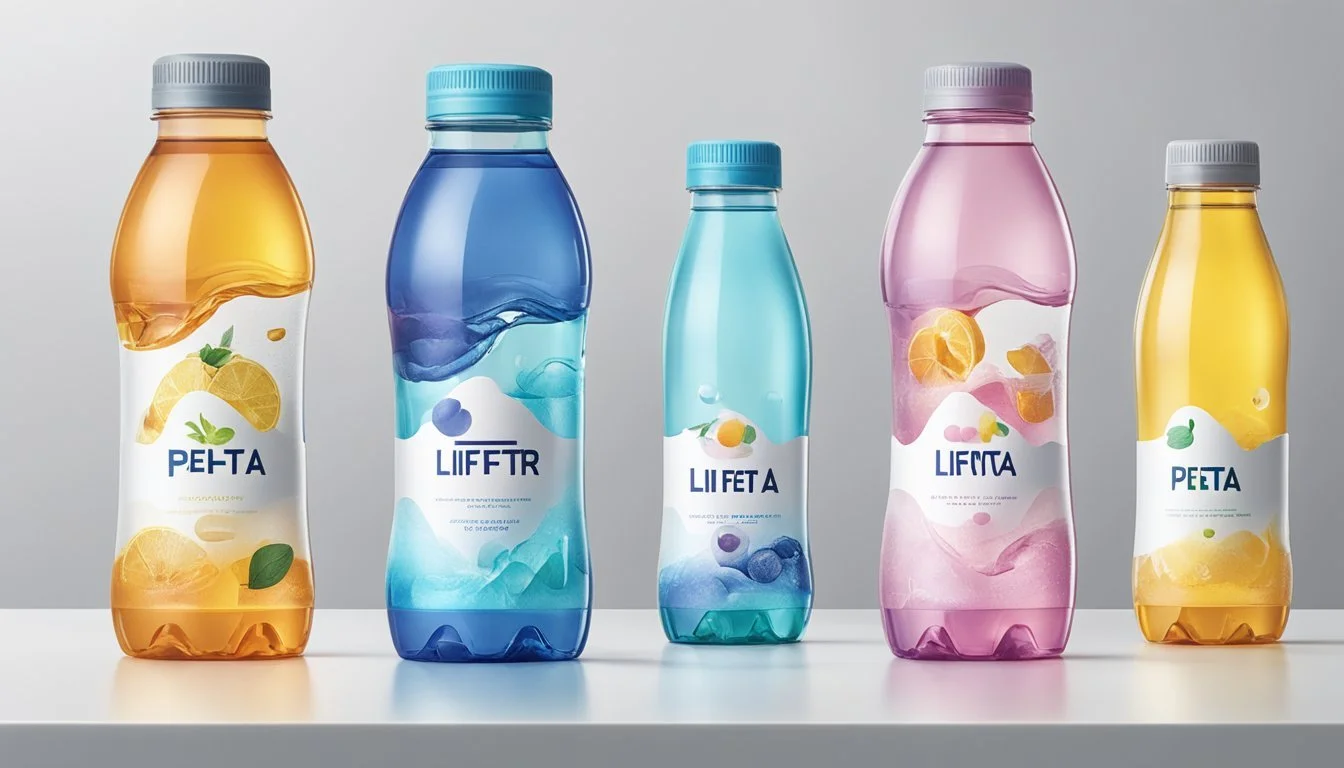LIFEWTR vs. Penta
Comparing Quality and Taste of Bottled Waters
Choosing the right bottled water can be an unexpectedly complex decision for consumers. Factors like taste, purity, and added health benefits all play a role in determining which brand individuals might prefer. LIFEWTR and Penta are two brands that have established themselves within the crowded bottled water market, each offering their unique selling points. LIFEWTR is known for its artistically designed packaging and its focus on added electrolytes for taste, positioning itself as a premium purified water. In contrast, Penta prides itself on providing ultra-purified water, emphasizing the scientific process behind its distillation and boasting a distinct level of purity.
The consumption of bottled water has increased globally, challenging brands to differentiate themselves beyond the basic necessity of hydration. LIFEWTR uses a reverse osmosis purification process, then infuses its water with electrolytes, aiming to provide a clean taste and optimal hydration. Penta water undergoes a patented 13-step purification process, which includes infusing the water with oxygen, resulting in a product that they claim is free from impurities and pollutants. The company argues that this rigorous purification process contributes to a superior hydration experience.
As consumers weigh their options, they often consider both the immediate sensory experience of drinking the water and the long-term health implications of their choice. Both LIFEWTR and Penta have their dedicated followings and have received reviews that comment on their respective tastes and benefits. Whether the choice is based on the crispness of the water, the bottle design, or the brand's purported health benefits, the decision between LIFEWTR and Penta is representative of how personal the choice of bottled water can be.
Understanding Bottled Water
In the landscape of bottled water choices, consumers are met with a variety of types, each with its source, purification methods, health implications, and environmental impact. Recognizing the differences in bottled water helps guide better choices for hydration needs.
Types of Bottled Water
Bottled water generally falls into several categories. Spring water originates from an underground source and must flow naturally to the earth's surface or be extracted through a borehole. Mineral water also comes from underground sources but contains a consistent level of minerals with no additional processing. Purified water, such as LIFEWTR, undergoes a purification process that can include reverse osmosis, distillation, or deionization. Alkaline water boasts a higher pH level, and artesian water is drawn from a well tapping an aquifer.
Bottled Water Source and Purification
The source of bottled water impacts its taste and quality. Sources like natural springs, aquifers, and municipal supplies undergo various purification methods to meet safety standards. Reverse osmosis removes contaminants by forcing water through a semipermeable membrane. Distillation sanitizes water through boiling and condensation, while UV light treatment is a chemical-free method to eliminate pathogens. For enhanced taste and homeostasis of the body, brands like LIFEWTR add electrolytes back into the water post-purification.
Health Implications of Bottled Water
Bottled water's health effects depend on the mineral content and presence of contaminants like heavy metals. While mineral water provides beneficial minerals and alkaline water may promote acid-base balance, purification methods aim to produce safe water free from harmful substances. Bottled water stored in plastic bottles may contain BPA, although many brands now use BPA-free materials to alleviate health concerns.
The Environmental Impact of Bottled Water
The production and disposal of bottled water carry environmental ramifications. The production of plastic bottles consumes fossil resources, with recycling not always properly managed, leading to pollution and waste. Environmental impact is equally shaped by the transport of bottled water and energy used in the production processes. As a consequence, there is increasing pressure on manufacturers to reduce the environmental footprint of bottled water through improved practices and consumer awareness.
Comparative Analysis
This section provides a detailed comparison between LIFEWTR and Penta bottled waters, focusing on their brand background, taste, and water quality characteristics, as well as their packaging and availability to consumers.
LIFEWTR and Penta: Brand Overviews
LIFEWTR is a premium bottled water brand owned by PepsiCo, distinguished for its pH-balanced water with added electrolytes. The brand is recognized for its artistically designed bottles, often featuring the work of emerging artists. Penta is an ultra-purified, high-pH water known for its proprietary 13-step purification process. While not as universally recognized as LIFEWTR, it positions itself as providing water with superior purity.
Taste Profiling and Water Sources
LIFEWTR's taste is described as clean and refreshing, an outcome of its reverse osmosis purification and re-mineralization process, where select electrolytes are added for taste. Penta, on the other hand, claims its patented process removes more impurities than competitors, resulting in a distinct crisp taste. LIFEWTR is sourced from municipal sources, then purified, while Penta uses natural spring water as its base source.
Nutrient Content and Water Quality
Both brands tout a high-quality product, but with different approaches. LIFEWTR has a balanced pH and includes added electrolytes for a body-friendly composition. Penta boasts not just a high pH but also emphasizes the absence of additives or trace elements, promoting the purity of its water. Water quality parameters like Total Dissolved Solids (TDS) and ionization levels cater to varied consumer preferences, with Penta likely having lower TDS due to its extensive filtration.
Packaging and Accessibility
Packaging for both brands is BPA-free, reflecting a commitment to consumer health and environmental considerations. Penta's bottles have a straightforward, health-focused aesthetic while LIFEWTR bottles feature vibrant, artistic designs. In terms of accessibility, PepsiCo's distribution network gives LIFEWTR broader supermarket and retail presence, whereas Penta is more niche, though available online and in select health-oriented stores.
Water Quality Standards and Health Regulations
When assessing bottled waters such as LIFEWTR and Penta, it is essential to consider the water quality standards and health regulations they adhere to. This involves understanding the regulatory frameworks established by the Environmental Protection Agency (EPA) and the Food and Drug Administration (FDA), as well as recognizing the role of international bottled water associations in benchmarking quality.
EPA and FDA Regulations for Bottled Water
The FDA is responsible for regulating bottled water as a food product, setting standards based on EPA regulations for tap water. Both LIFEWTR and Penta must comply with FDA requirements, which encompass various contaminants including chemicals like chlorine and nitrates, and metals such as sodium, iron, calcium, and magnesium. Disinfection processes are also monitored to ensure safety without compromising taste.
EPA Standards cover public water systems and involve stringent testing for contaminants. Bottled water brands often promote their compliance with these standards to assure consumers of their quality. Bottled Water Regulations:
Chemical Pollutants: Standards for pollutants similar to those of tap water.
Disinfection Byproducts: Limits on substances formed during disinfection.
Physical Contaminants: Monitoring of compounds affecting water aesthetics.
Microbiological Contaminants: Regulations to prevent disease-causing microbes.
International Bottled Water Associations
Internationally, bottled water brands may adhere to additional guidelines from associations such as the International Bottled Water Association (IBWA) and the European Bottled Water Association (EBWA). Both LIFEWTR and Penta can benefit from these associations' emphasis on high standards and practices.
IBWA: Promotes rigorous standards beyond FDA's, often requiring member companies to adhere to certified testing by organizations like NSF International, which is known for developing public health standards.
EBWA: Works in the European context to ensure quality control and promote sustainable practices among its members, focusing on source protection and regular testing for a wide range of substances.
Certifications and Testing:
NSF International: Provides certification for compliance with health standards.
IBWA: Mandatory annual inspections, unannounced, for member companies.
EBWA: Enforces European standards, potentially affecting imports and exports.
By maintaining compliance with EPA and FDA regulations and by participating in international bottled water associations, brands ensure the quality and safety of their products, addressing concerns over contaminants and minerals.
Consumer Preferences and Market Trends
In an increasingly health-conscious era, consumer predilections and market dynamics are paramount in distinguishing players like LIFEWTR and Penta in the bottled water industry.
Market Leaders and Competitors
Among the bottled water brands, Nestlé's Pure Life and PepsiCo’s Aquafina are recognized as market leaders due to broad consumer trust and extensive distribution networks. They compete with premium brands such as Fiji, Evian, and VOSS, which occupy the luxury segment of the market. Factors influencing brand competition include purity levels, taste, and source of water—spring water, mineral water, and those produced through reverse osmosis. Companies are also distinguishing themselves through enhanced products like Essentia’s alkaline water or CORE Hydration’s nutrient-enriched offerings, which cater to niche consumer preferences.
Trends in Bottled Water Consumption
The shift towards healthy living has propelled the demand for bottled water options that offer more than hydration. Consumers often choose brands like LIFEWTR and Penta based on the purification process, such as reverse osmosis, and health benefits like added electrolytes or alkalinity. Alkaline water brands, such as Essentia, highlight their higher pH levels as beneficial to health, a claim that is resonating with many consumers. Moreover, sustainability has become a significant factor, with customers preferring brands that demonstrate a commitment to reducing environmental impact. As of the latest industry reports, still water holds the largest market share, but there is a noticeable growth in demand for enhanced water products.
The Science of Hydration
Maintaining hydration is paramount for bodily functions, with water serving as a vital component in regulating body balance and pH levels.
Hydration and Body Balance
The body's homeostasis—a state of equilibrium—is maintained through proper hydration. Water acts not just as a thirst-quencher but also as a critical solute that facilitates the transport of electrolytes and other essential minerals throughout the body. These elements are crucial because they contribute to nerve impulse conduction, muscle function, and overall cellular health.
Electrolytes such as sodium, potassium, and magnesium support nerve function and muscle contractions.
Adequate water consumption helps to distribute these minerals effectively, optimizing health benefits like improved physical performance and cognitive function.
Understanding pH Levels
The pH level in water indicates its acidity or alkalinity on a scale from 0 to 14, with 7 being neutral. Alkaline water, which has a pH higher than 7, is often promoted for its potential health benefits, although these claims are not universally supported by scientific research.
Alkaline water: Some brands, like LIFEWTR and Essentia Ionized Water, offer alkaline bottled water asserting that it can help neutralize acid in the bloodstream and offer health advantages.
pH level: Regular monitoring of water's pH is essential for assessing its quality and ensuring it is within an acceptable range for consumption.
It's important to note that the body naturally regulates pH through homeostatic mechanisms, but the consumption of water with balanced mineral content may complement these processes.
Conclusion
When it comes to LIFEWTR and Penta, consumers are presented with two distinct choices in the bottled water market. Below is a concise comparison to assist in making an informed decision:
Taste & Purity: LIFEWTR offers a refreshing experience and does meet safety standards, while Penta is recognized for its ultra-purified water, produced by a patented process.
Rankings: Various rankings may place these brands differently on the scale from worst to best, often based on an array of factors including taste, purity, and added minerals.
Consumer Preferences: The best water for an individual may vary based on personal taste preference, purported health benefits, and environmental considerations.
Environmental Impact: Both brands have implications on the environment, given their use of plastic bottles. Responsible consumption and disposal are key for environmentally conscious consumers.
Here is a simplified summary:
Criteria LIFEWTR Penta Taste Refreshing Ultra-Purified Consumer Rankings Middle-tier Varies Environmental Plastic use Plastic use
Consumers should weigh the pros and cons of LIFEWTR and Penta according to personal values and desires. Both have their own merits and may be suitable for different audiences. It's pivotal to consider not only taste and purity but also the environmental footprint of each product.





